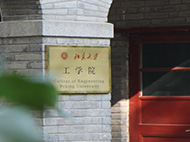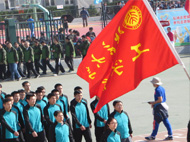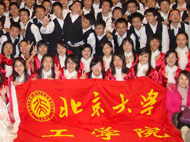主 办:力学系与湍流重点实验室
报告人: Prof. Radhakant Padhi Dept. of Aerospace Engineering, Indian Institute of Science, Bangalore
时 间:5月22日(周二)上午10:00-11:30
地 点:澳门太阳娱乐网站官网1号楼209会议室
主持人:王金枝 教授
报告内容摘要:
Traditionally guidance and control synthesis for aerospace vehicles is done in three loops, i.e. an outer loop for the vehicle guidance and two inner loops for the control synthesis. This essentially introduces approximations and associated difficulties such as larger settling time and higher transients. To overcome these difficulties (which is very much essential in many modern challenging missions), the philosophy of integrated guidance and control (IGC) has been proposed in the recent literature. However, an inherent problem in the IGC designs is the non-assurance of time-scale separation between the translational and rotational dynamics. More important, the desired body rates are not explicitly available, whereas the primary action of the control surface deflection is felt in the alteration of the body rates (which subsequently leads to alteration of the translational dynamics). Because of this, the design operates in a very narrow region of time-varying tuning parameters and tuning becomes extremely difficult. Hence, to retain the best of both philosophies, the ides of two-loop *Partial IGC* has been proposed by the speaker and successfully experimented in a number of problems by him and his co-workers. This talk, a significant part of which is based on a recent publications of the speaker, will essentially give an exposure to the basic philosophy of this two-loop Partial IGC, followed by its application to the challenging problems of successfully guiding an interceptor to engage with an incoming high-speed target. Extensive six degrees-of-freedom simulations studies have been carried out (considering three-dimensional engagement geometry) to demonstrate the effectiveness of the proposed new design approach engaging high-speed ballistic targets. Moreover, a variety of comparison studies have also been carried out to demonstrate the effectiveness of the proposed approach, which will also be discussed in this lecture.
报告人简介:
Dr. Radhakant Padhi is currently working as a Professor in the Department of Aerospace engineering, Indian Institute of Science (IISc), Bangalore. He did his Masters in Aerospace Engineering from IISc Bangalore, followed by his Ph.D. in Aerospace Engineering from Missouri University of Science and Technology – Rolla (formerly Univ. of Missouri-Rolla), USA. In 2003, he joined the Indian Institute of Science and is continuing over there since then.
Dr. Padhi is a member of the Council of International Federation of Automatic Control (IFAC) and also a member of IFAC Technical Committees on Aerospace and Mechatronics. He is an Associate Fellow of American Institute of Aeronautics and Astronautics (AIAA) and a Senior Member of IEEE. He was the President of the Automatic Control and Dynamic Optimization Society, which is a National Member Organization of IFAC in India. He is also life members of Aeronautical Society of India, Systems Society of India and Soft Computing Research Society of India. Dr. Padhi’s main research interest is on synthesis algorithms in optimal and nonlinear control as well as state estimation. He works on diverse application areas such as control and guidance of aerospace vehicles, biomedical systems, mechanical systems, distributed parameter systems and industrial process control. He has more than 230 publications in various international journals and conferences and has received awards and honours for his valuable research contribution. The guidance and control algorithms developed by Dr. Padhi have found good acceptance across the globe.
欢迎广大师生光临!








